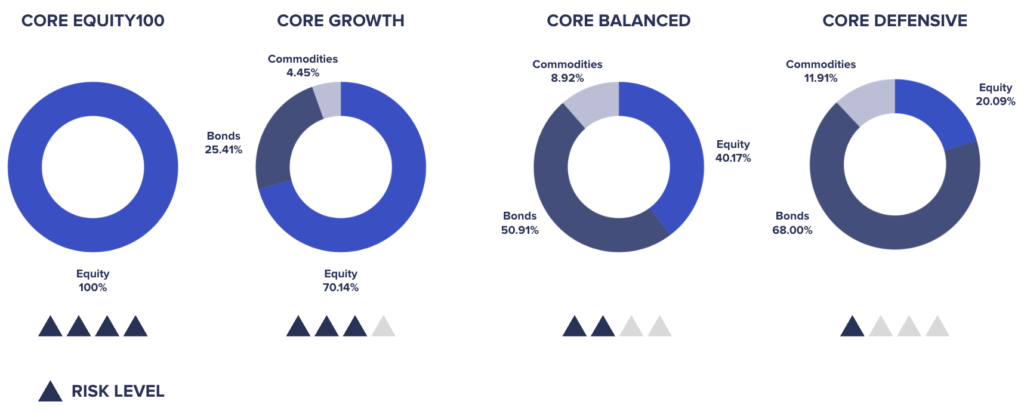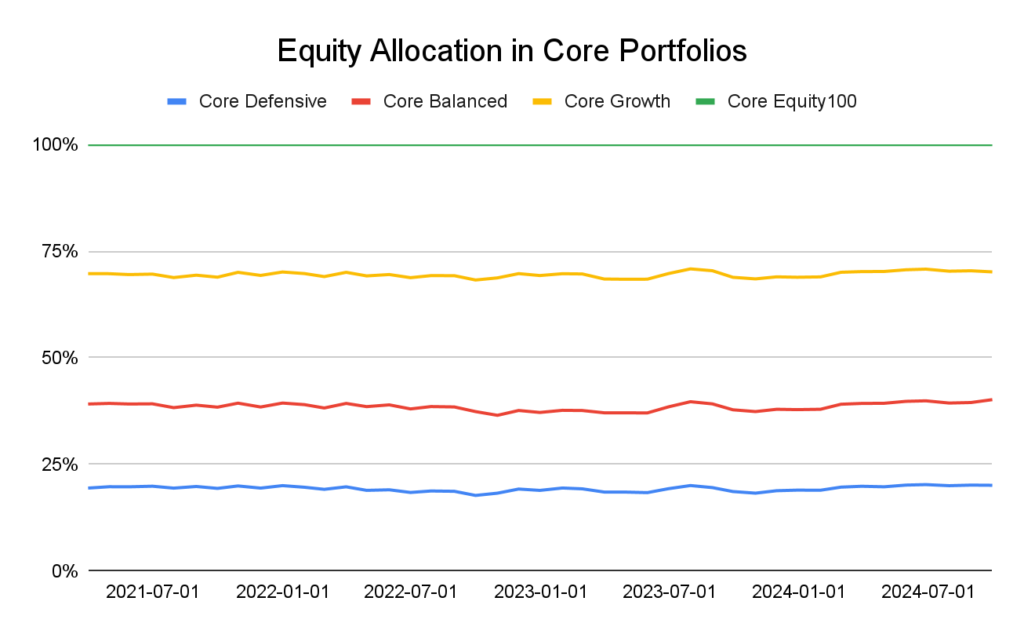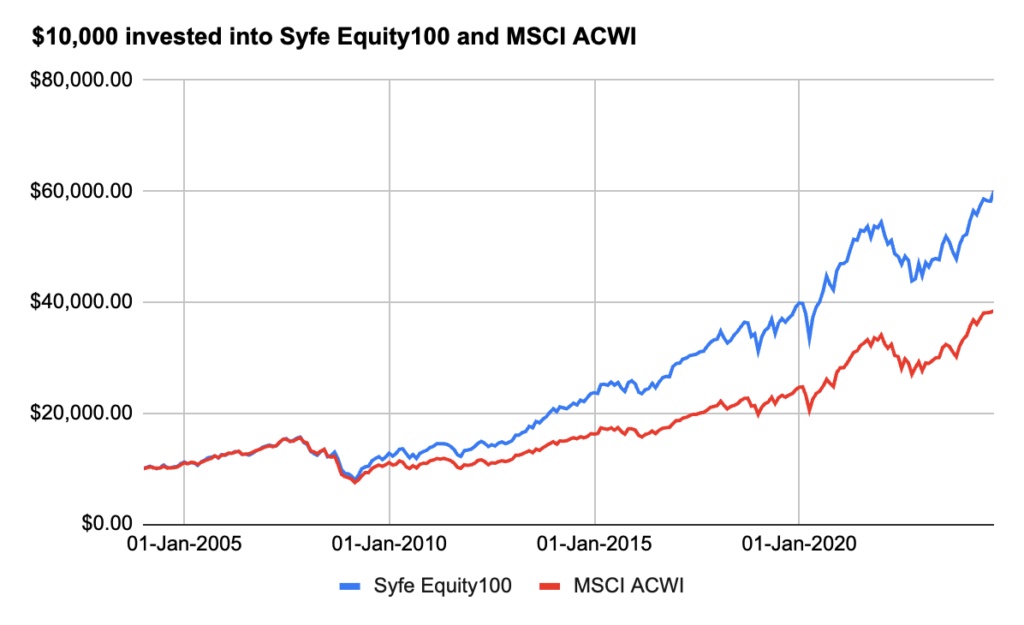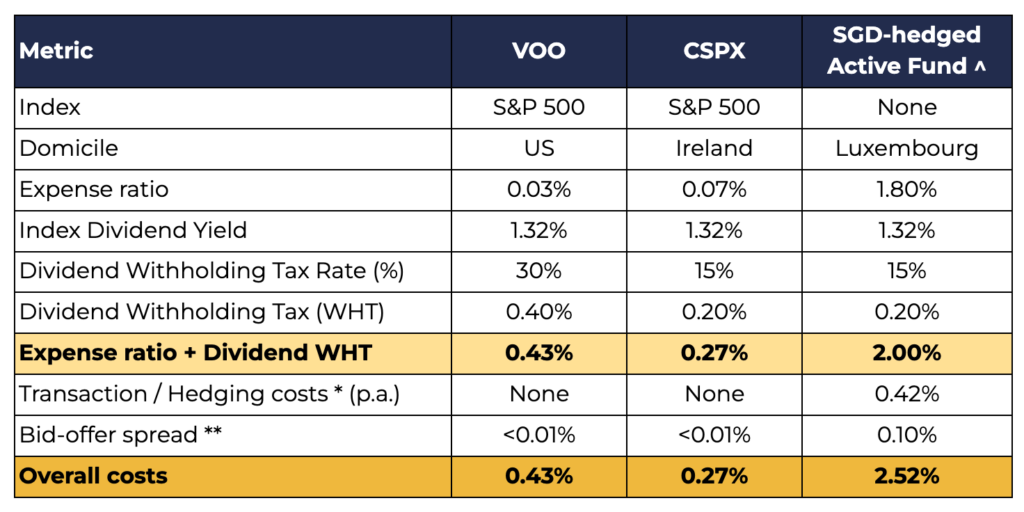
At Syfe, we believe that better investing has the power to shape better outcomes in life. Syfe was built on the mission of bringing institutional level investment offerings to everyone, at a fraction of the cost that traditional institutions charge.
Here, we cover Syfe’s investment approach to deliver long-term returns, why we use ETFs and index funds as building blocks of our portfolios and how we save on dividend withholding taxes by using UCITS funds.
Syfe’s investment approach
Our investment approach builds on decades of research, expertise and experience, leading to strategies that can withstand the test of time. Syfe espouses a passive, long term investment strategy that minimises cost, coupled with systematically and thoughtfully applied analysis to deliver the most well-rounded, consistent long-term results that aligns to an individuals’ risk and goals.
Syfe’s Core portfolio allocations have a broad-based exposure to the global markets, and are diversified across asset classes, sectors and geography. The equity allocations in the portfolio are further optimised by incorporating factors that drive long term risk-adjusted returns.
The chart below shows the strategic asset allocations for each of our portfolios. The key difference between each Core portfolio is their exposure to stocks and bonds, which in turn determines their overall risk level.

Our portfolios are rebalanced twice a year to maintain the strategic asset allocation in order to improve long term returns. This is done through:
- Asset Class Risk Budgeting: generating stable asset allocation where overall risk of the portfolio is distributed across the portfolio.
- Smart Beta (Factor Investing): seeking to capture risk-premia
We do not make tactical changes in our portfolios based on near term market “noises” like active fund managers do, and stay true to our client’s agreed asset allocation based on their portfolios.
As such, with Core portfolios, investors will find that their asset allocation is relatively stable over time, varying only slightly due to market fluctuations.

Delivering long term returns
While ranking of performance over any time period is possible, our goal is to build long term wealth. This takes time and it is important to be invested and consistent.
The graph below highlights how a small difference in returns can impact the growth of $10,000 in capital over the long-term. Syfe’s approach focuses not on trying to beat the market, but on systematically harvesting proven factors that in turn translates to better risk-adjusted return overall.

A focus on cost can significantly improve returns over time
ETFs and index funds aim to mimic the performance of the index they track and provide a highly efficient, low cost and passive way to invest into the global markets. The passive investing momentum has accelerated in the last few years: market share of passively managed US equity funds has now overtaken active funds, from 24% in 2010 and 12% in 2000.
Take for example, investing into the world’s best known index – S&P 500. One can easily invest into it through ETFs such as VOO, IVV and CSPX or index funds such as Amundi Prime USA Fund which are managed by the world’s leading asset managers. The cost of investing into these is just 0.03%-0.07% a year.
On the other hand, some active funds, can cost over 50 times as much – 1.60% – 2%. There are also hidden fees when investing into active funds. Transaction costs and other fees such as brokerage commissions or sales charges are not included in a fund’s expense ratio.

^SGD Active fund references active funds such as Franklin US Opportunities Fund*Transaction and hedging costs for funds are estimated to be 0.5% on average based on Lumint data.
**Mutual fund bid-offer spread estimated to be approx. 0.10% based on data from National Bank Financial
These hidden costs have a direct impact on returns. As you can see from the table below, the SGD Index fund’s performance is about 2.42% lower on an annualised basis over the last 10 years.

Why UCITS funds are the Better Choice for Long-Term Growth
UCITS, or Undertakings for Collective Investment in Transferable Securities, is a regulatory framework established by the European Union that sets high standards for investment funds. UCITS funds are listed in any country in the European Union and adhere to these rigorous regulations.
For non-US investors, UCITS ETFs provide tax benefits, all while maintaining the strict compliance and safeguards that the UCITS framework demands.
Tax benefits for non-US investors
Taxes can have a significant impact on your investment returns. Fortunately, UCITS ETFs offer better tax efficiency for non-US investors compared to US-domiciled ETFs. UCITS ETFs have a lower withholding tax rate on dividends of 15%, compared to 30% for US-based ETFs. This difference in tax treatment can lead to a noticeable impact on your net returns, especially when compounded over the long term.
Regulatory standards
Furthermore, UCITS regulations ensure that funds maintain high levels of transparency, liquidity, and diversification. For instance, the UCITS framework limits the exposure a fund can have to any single asset, preventing excessive concentration risk. This means that when you invest in a UCITS fund, you’re protected by one of the world’s most stringent regulatory standards.
One place where your wealth lives
At Syfe, we are a mission-driven company dedicated to simple, smart yet powerful investing guided by enduring principles that have withstood the test of time. Our focus will and always continue to be delivering institutional level investment offerings at a fraction of the cost, to best support our customers in meeting their financial goals; whether it is retirement, financial independence, children’s education or buying a house. To this end, we are heartened that many investors continue to trust us to grow their money in the best way possible.
The next year will see significant growth from us, following our latest funding round, as we take our mission across Asia, allowing even more people across the region to participate in attaining better outcomes in life through better investing. Our team will continue to be relentless in building out more products and services in Singapore and beyond, to be the one place where your wealth lives.



You must be logged in to post a comment.